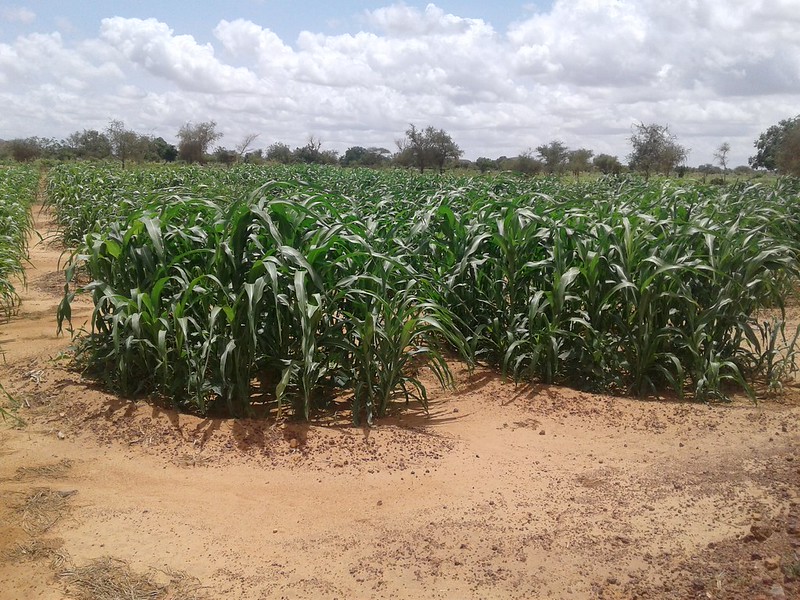The International Food Policy Research Institute (IFPRI) released a research brief named Sahel Social Cohesion Research in Burkina Faso and Niger. The brief summarises a study conducted by the World Food Programme (WFP) to increase conflict sensitivity and contribute to social cohesion building in Burkina Faso and Niger.
This study falls in a context in which numerous levels of distrust have emerged within and between communities in both countries. This is mainly explained by the growing severe competition for natural resources, violence from extremist groups, and the influx of displaced persons, among other stressors. In such settings, experiences of trust, safety, and security are crucial for social cohesion. Trust is especially important for individuals to feel safe and ultimately, commit to collaborative actions that sustain the collective interest at different levels, namely community, district, provincial, or national levels. Thus, it is essential to understand how WFP can contribute to improving natural resources management and building social cohesion. What actions can WFP undertake to achieve these goals?
WFP’s role to promote participatory and collaborative processes
WFP helps communities cope with disasters threatening food security and livelihoods by providing knowledge, resources, and resilience building. In Burkina Faso and Niger, WFP also promotes climate-resilient agricultural infrastructure and addresses environmental issues to boost equitable access to natural resources. To this end, WFP fosters participatory processes for mobilising and engaging communities in peaceful coexistence.
As such, WFP plays a role in two levers, promoting social cohesion and fair access to natural resources.
In the first area, WFP works on the dialogue between different groups, reduces youth migration and its impact on social cohesion building, increases social interactions and mitigates tensions between farmer and herder communities.
In the second sphere of action, WFP promotes fair access to land ownership, especially for women and young people.
As such, which actions are implemented by WFP to fulfil its role in Burkina Faso and Niger?
WFP’s interventions to improve natural resource management and social cohesion
WFP intervene to appease tensions both within and outside of communities in the Sahelian region, to promote equity in the natural resource distribution, to build relationships among stakeholders and communities and to ensure that several administrative levels support efforts to build resilience.
To achieve this, WFP utilised a mixed-method approach with qualitative and quantitative data, including interviews and group discussions.
Understanding the nature type and mix of pre-existing relationships within and between communities is key for rebuilding trust and supporting collective actions.
Through the rehabilitation of lands and the construction of water-harvesting and retention structures, WFP increased access and availability to water for both domestic and livestock use and enabled some communities to start dry-season gardening resulting in extra income and food. These off-farm periods also enabled youth retention which created spaces for opportunities and dialogues.
In addition, WFP undertook interventions to improve soil conservation and fertility. Indeed, composting techniques valorising farm and household refuse into more and better manure improved the quality and in turn, the productivity of lands. Techniques such as half-moons, stone bunds and zaïs enabled farmers to enlarge their cultivable land. WFP also organised reforestation activities, pasture development and other agroforestry interventions to expand the availability of grazing fields and fodder cultivation in the communities, reducing the need to travel far for the animals’ feed supply. Lastly, water resource development such as dams, ponds and wells also increased the self-sufficiency of communities as Saidou Savadogo stressed in an interview. Thus, these circular approaches, aligned with the ‘Clean and Green’ action-research project of SEI and WaterAid, increased yields and reduced competition for and equitable access to natural resources.
WFP implemented training programmes to provide knowledge and technical know-how to individuals, such as adequate and affordable technologies. Thereby, it contributed to long-term human asset building in the communities. Those who gained new skills were respected by their peers, including women who developed childcare and nutritional skills, obtained recognition from their males and were invited into decision-making processes.
Lastly, WFP intervened in the distribution of food, cash, seeds and other resources to mobilise and sustain the interests and engagement of communities in Burkina Faso and Niger.
Expanding observed practices in different contexts
It is foundational to note that pre-existing shared norms, needs, and intergroup and intercommunity trust-building varies across communities both in Niger and Burkina Faso Therefore, prior to any initiatives, these characteristics must be investigated and considered.
The participating communities obtained significant and helpful support from WFP, consequently, they advocate for the expansion, enhancement and intensification of these types of programmes.
Communities recommended the development of off-farm production opportunities and income-generating activities to increase their resilience in food security. They advocated for the intensification of training of community actors regarding the transparent management of collective assets to mitigate conflicts over communal natural resources. Communities stressed the need to strengthen social cohesion through education and to focus on agribusiness capacity development for young people. Communities also appreciated the formalisation of land transactions through documentation as it improved land management.
Moreover, communities emphasised the need for complementary infrastructure to facilitate trade through better accessibility to villages. Youth Entrepreneurship for Peace was also stated as for creating income opportunities for youth and building community.
Finally, when providing support, WFP also pinpointed the essentiality to bear in mind the questions of sustainability, growth and replicability.
All in all, this study demonstrates that WFP can provide relevant support to communities to enhance their natural resource management and establish nexus within and between communities. Initiatives must be context-specific to satisfy the needs of communities based on their settings. The communities in Burkina Faso and Niger that participated in the study found WFP’s measures to be inclusive and equitable, ensuring that no one was left behind.
Written by David Mingasson, SIANI reporter
